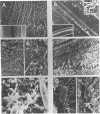Abstract
Multiple biochemical assays of microbial mass and activities were applied to the estuarine detrital microbiota colonizing morphologically similar polyvinyl chloride needles and needles from slash pine (Pinus elliottii). Biodegradable pine needles consistently showed 2- to 10-fold higher values of extractable adenosine 5′-triphosphate, rates of oxygen utilization, activities of alkaline phosphatase and phosphodiesterase, and the mucopeptide cell wall component muramic acid than did the polyvinyl chloride needles, during a 14-week incubation in a semitropical estuary. The higher activities by the microbiota of the biodegradable substrate correlated with estimates of the microbial density from scanning electron microscopy. The microbial community associated with the nondegradable substrate showed minimal activity of β-d-galactosidase, β-d-glucosidase, and α-d-mannosidase in contrast to the biota of the degradable substrate, which showed 10- to 100-fold higher activities of these glycoesterases. These enzymes logically could be involved in catabolism of the carbohydrate polymers of the detritus. Assuming equivalent rates of predation, a surface that is also a utilizable substrate supports a three- to fivefold more active microbial population.
Full text
PDF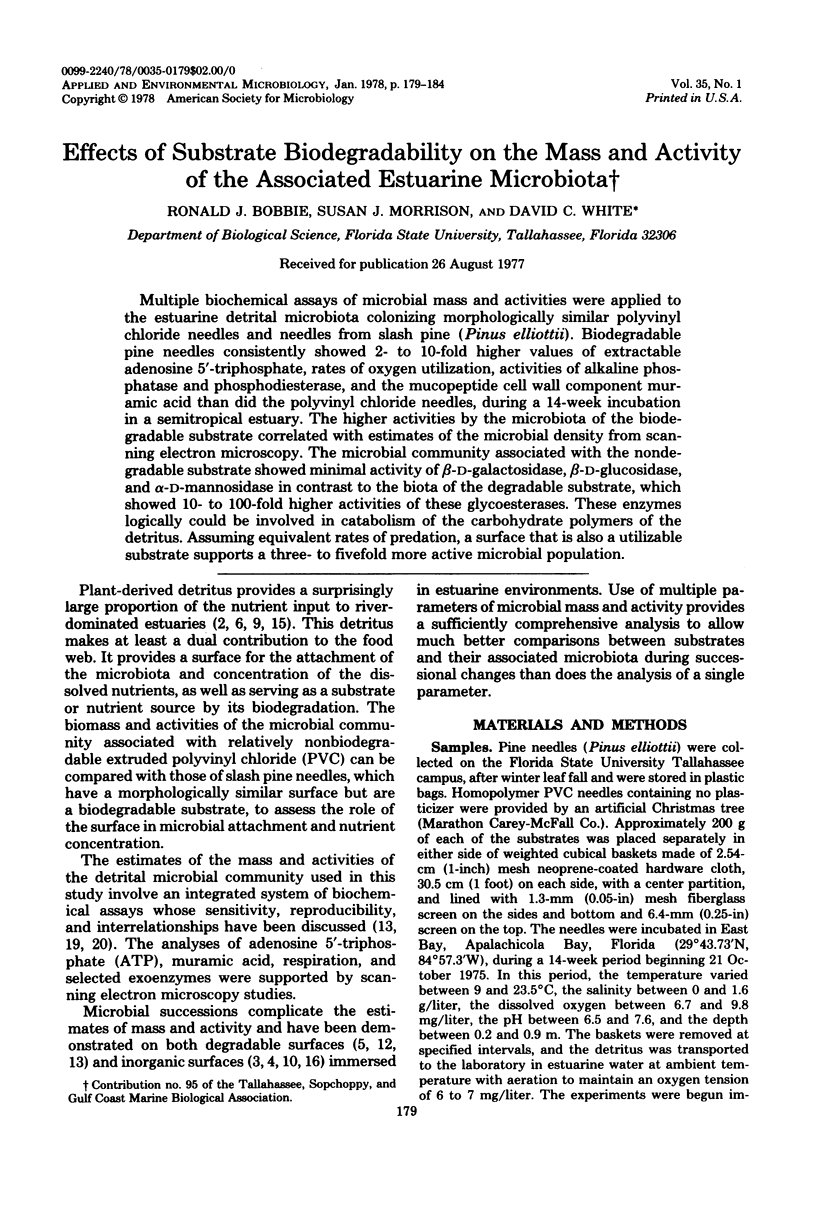
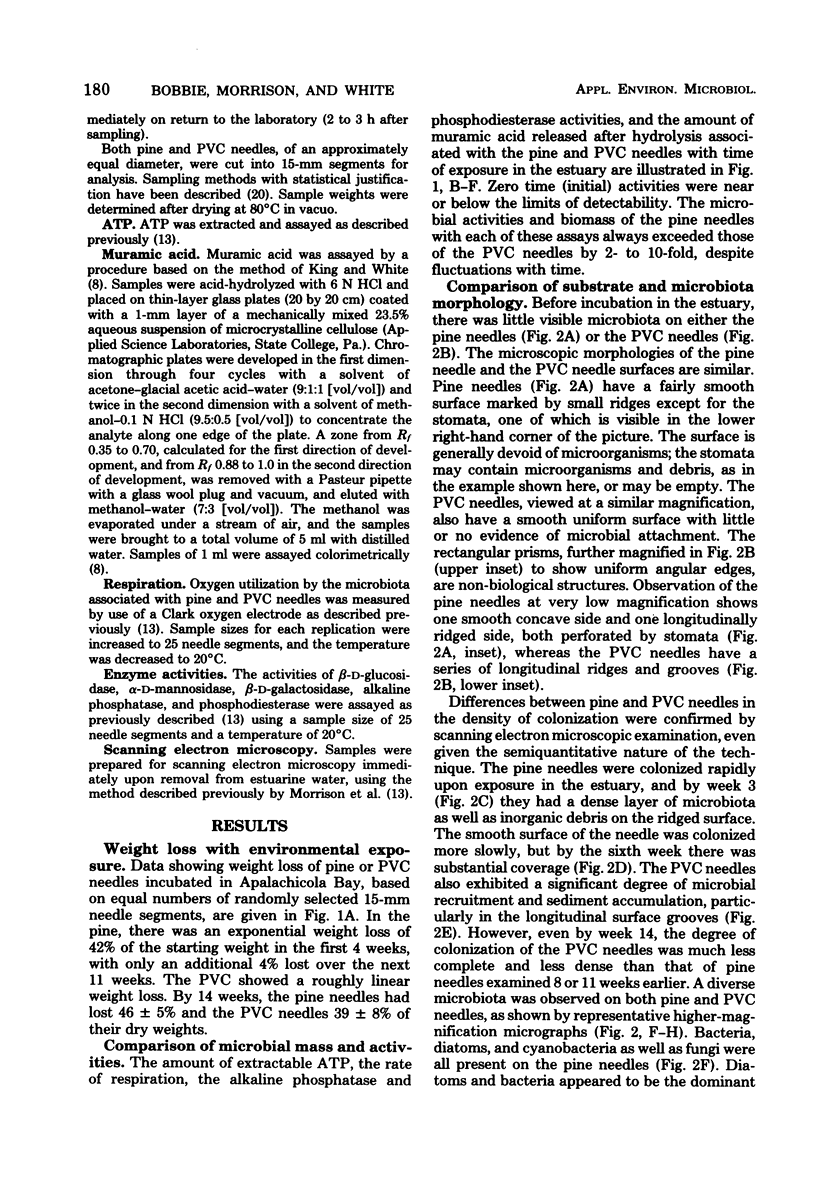
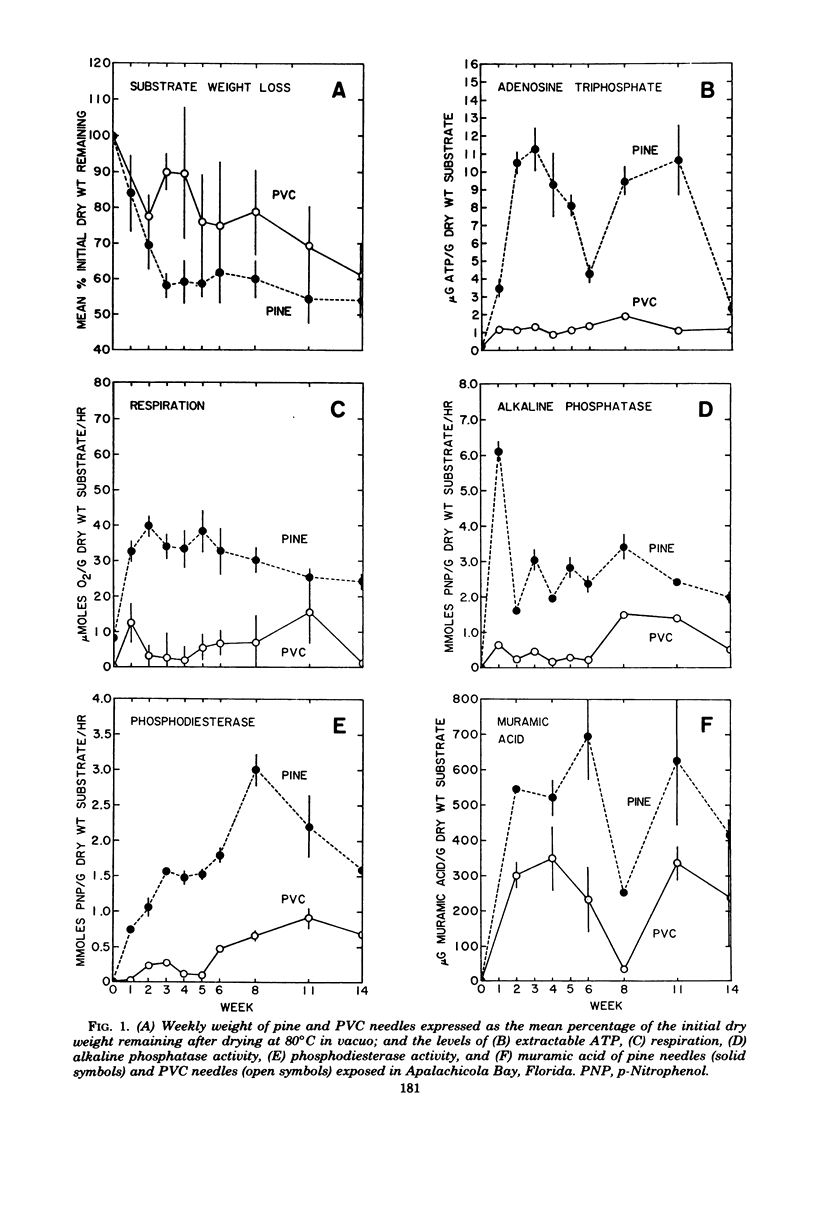
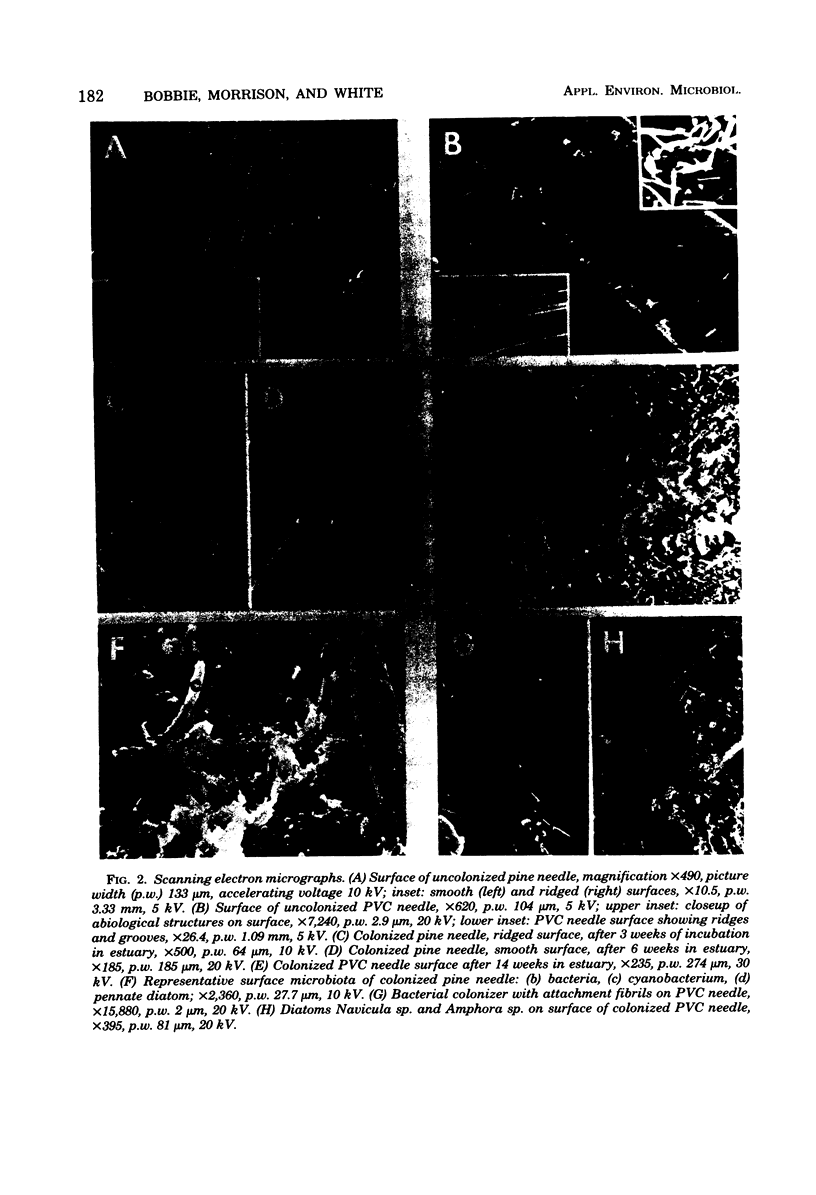
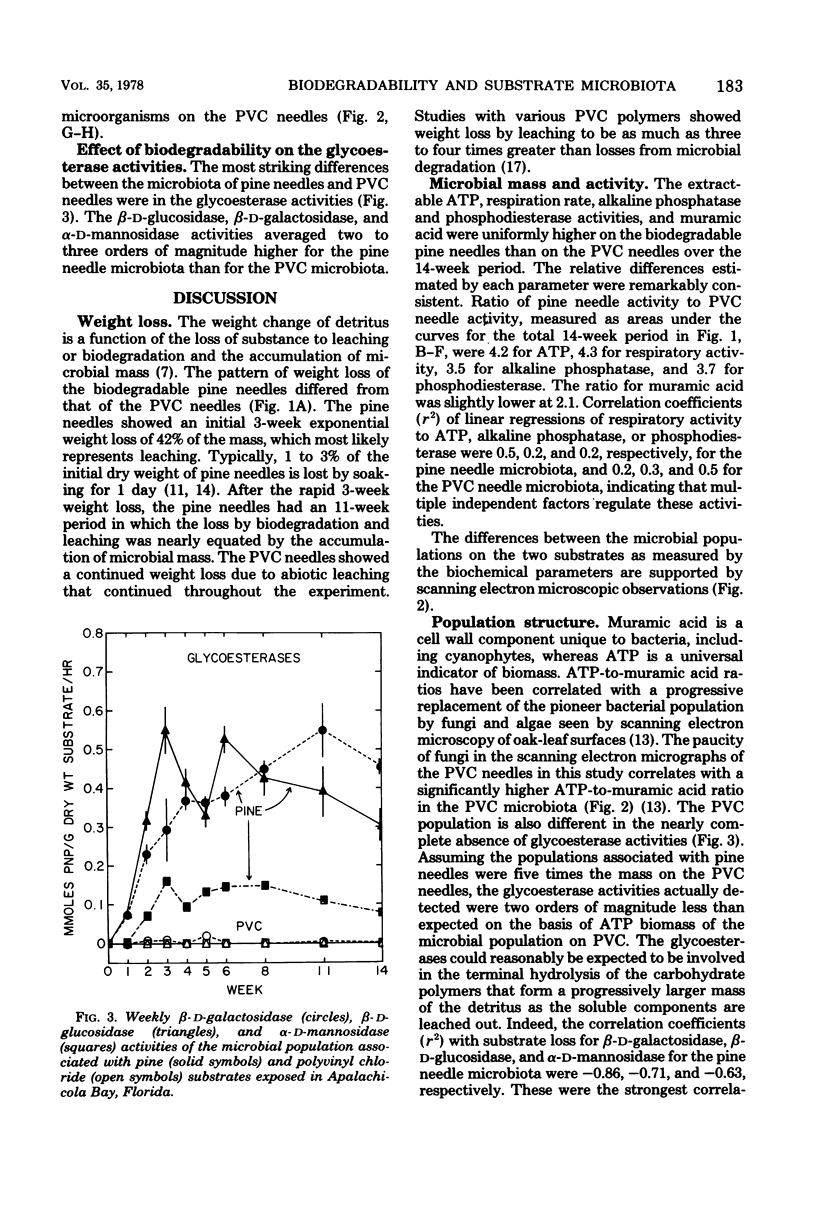
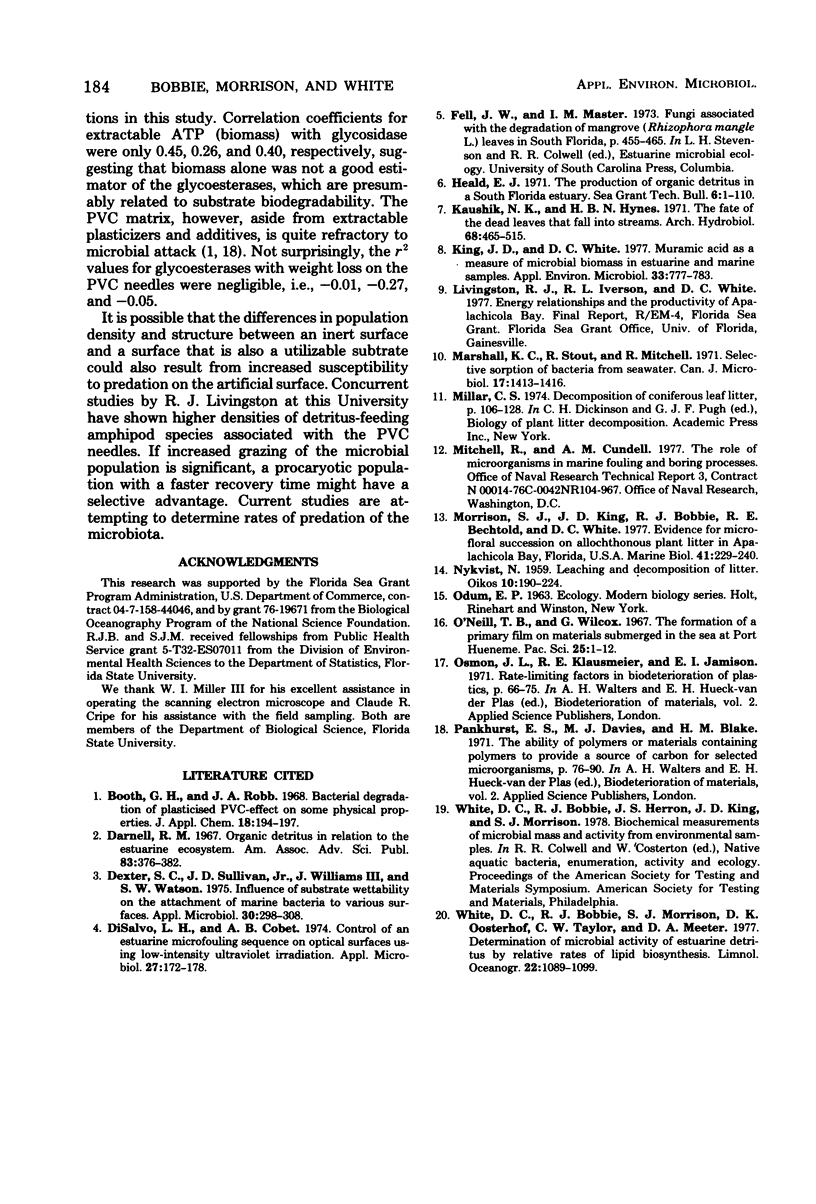
Images in this article
Selected References
These references are in PubMed. This may not be the complete list of references from this article.
- Dexter S. C., Sullivan J. D., Williams J., Watson S. W. Influence of substrate wettability on the attachment of marine bacteria to various surfaces. Appl Microbiol. 1975 Aug;30(2):298–308. doi: 10.1128/am.30.2.298-308.1975. [DOI] [PMC free article] [PubMed] [Google Scholar]
- Disalvo L. H., Cobet A. B. Control of an estuarine microfouling sequence on optical surfaces using low-intensity ultraviolet irradiation. Appl Microbiol. 1974 Jan;27(1):172–178. doi: 10.1128/am.27.1.172-178.1974. [DOI] [PMC free article] [PubMed] [Google Scholar]
- King J. D., White D. C. Muramic acid as a measure of microbial biomass in estuarine and marine samples. Appl Environ Microbiol. 1977 Apr;33(4):777–783. doi: 10.1128/aem.33.4.777-783.1977. [DOI] [PMC free article] [PubMed] [Google Scholar]
- Marshall K. C., Stout R., Mitchell R. Selective sorption of bacteria from seawater. Can J Microbiol. 1971 Nov;17(11):1413–1416. doi: 10.1139/m71-225. [DOI] [PubMed] [Google Scholar]



